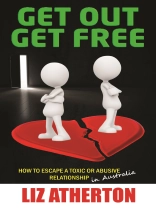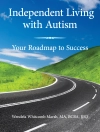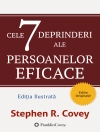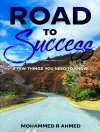In this ground-breaking book, author Liz Atherton explains the difference between healthy relating versus unhealthy, toxic and abusive relating. Every relationship has its ups and downs, but toxic and abusive relationships have distinctive patterns and behaviours that are detrimental to everyone involved.
Cycles of loving highs, stressful lows, promises of a better future and wanting to reduce your extreme stress can make breaking free from toxic or abusive relationships difficult, but knowing what to do when stress is reigning, and you feel numb, is challenging.
Staying in an abusive relationship can be dangerous and leaving even more so! Relentless stress, fearful thoughts and experiences can keep you grid locked and you’ll discover options and resources available to escape or deal with an abuser.
Gain the knowledge and power you need to stop the cycle you are in, particularly when clear thinking evades you, learn the daunting legal system processes on how to set clear boundaries in State civil courts and the Family Court of Australia.
From her own and many of her client’s experience, author Liz Atherton will show you what you have to face in order to stay safe, make your escape, set clear boundaries, begin to feel free, happy and heal from your abuse.
Зміст
From the Author
Acknowledgements
Introduction
Chapter 1: What is a healthy relationship?
Qualities to look for in a healthy relationship
Stages of a Relationship
The triangular theory of love
Your rights in or out of a relationship
Relationship myths
Is there uncertainty in your relationship?
Chapter 2: What is an unhealthy relationship?
Qualities to watch out for in an unhealthy relationship
Chapter 3: Is my relationship toxic or abusive?
Stress is a natural repsonse
How do I feel today?
Stress symptoms
Anger as a signal
Attitudes and behaviours of people who use violence
Am I in an abusive relationship?
Mental health issues
Your core beliefs
Chapter 4: FDV & its impact
The barriers of escaping FDV in a relationship
Defining Trauma
Mental illness – signs and signals
Children of FDV
When to report children experiencing FDV
Stockholm syndrome
Chapter 5: The cycle of violence
Phase 1 – Build up and stand over
Phase 2 – Acute Violence or Explosion
Phase 3 – Honeymoon
Awareness of the cycle
Unconscious need for love
Chapter 6 – Stopping the cycle of violence
Your happiness counts
Ego -vs- Self
Hurt people, hurt people
High risk indicators
Support network
Safety planning
Solutions to consquences of staying or leaving
Support
Rebuilding you
Chapter 7: Your legal rights
Should I get a restraining order?
Parental Alienation
Attending civil court
Evidence for civil court
Evidence for family court
Family Court Mediation
Legal Representation
Your application for Parenting Orders
Breach of Parenting Orders
Orders against a child’s will
Chapter 8: Moving Forward
Choosing your partner carefully
References
Further Information












